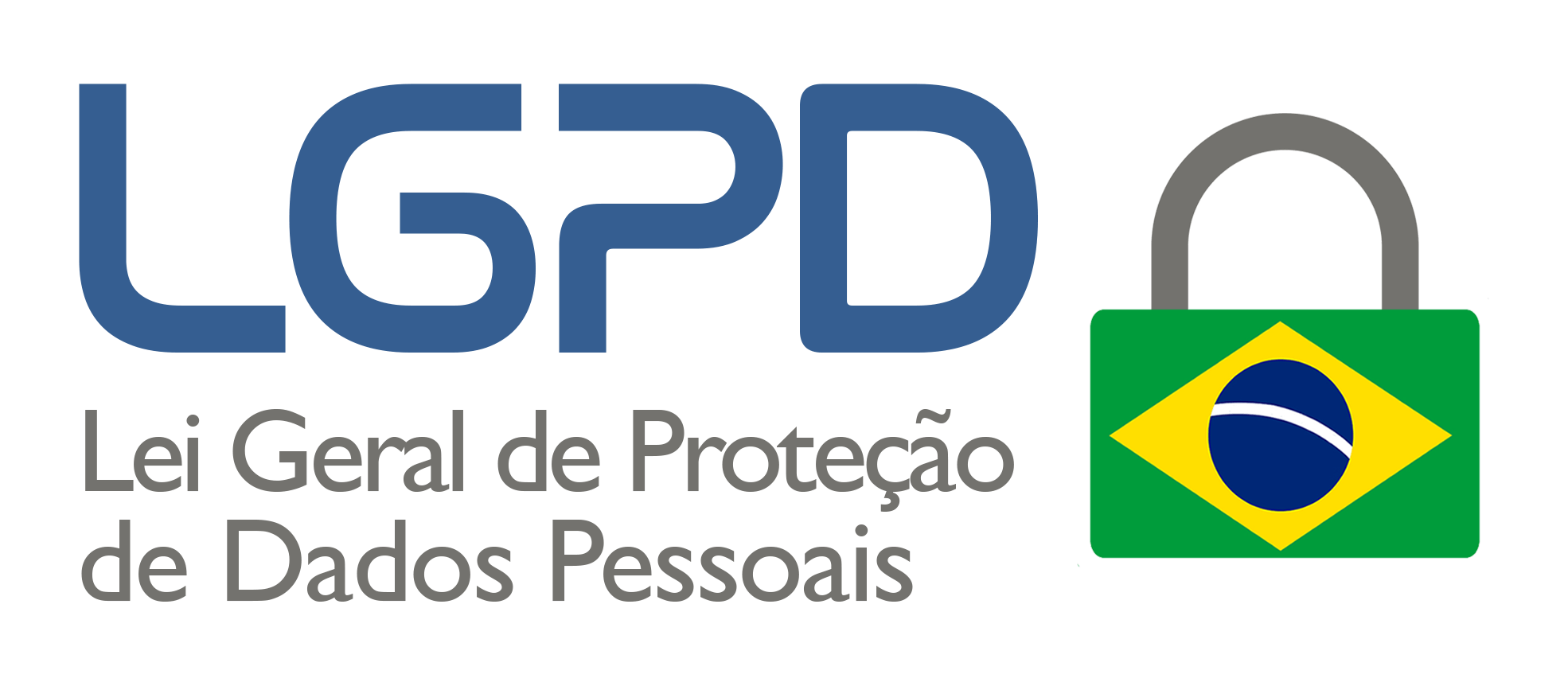January 2013 through May 2014 – While in charge of Latin America for MARINER – a Canadian company based in Saint John NB – focused on SW defined monitoring solutions for IP Video, Mr. Celso Merege achieved the signature of MARINER Partners´s first contract in Latin America, signed in Brazil.

The customer was VIVO, TELEFÓNICA de España´s brand in Brazil, acting in wide convergence scope, including mobile phones, broadband and content subscription (data, voice & video). The solution had ERICSSON as the international chosen integrator.

The big achievement
On December 2012, MARINER Partners was officially chosen as TELEFÓNICA‘s so called GVP (Global Video Platform) exclusive provider of end-to-end video monitoring service solutions, worldwide. That means any OB (Operational Business Unit) of TELEFÓNICA in any country in the world would need to go through MARINER when deploying any application involved in GVP. For instance, IPTV.
ERICSSON was previously chosen as TELEFÓNICA‘s exclusive prime System Integrator, worldwide.
Hence, for the purpose of deploying Telefónica Digital’s GVP, an international partnership between ERICSSON and MARINER was established, worldwide.
At that time, Mariner xVu was already the world’s first and most widely deployed end-to-end video monitoring solution for Microsoft Mediaroom (currently ERICSSON´s Mediaroom).
See TELFÓNICA´s original release about choosing Microsoft Mediaroom to power its PAY-TV & OTT services over TELEFÓNICA´s GVP (Global Video Platform) and across all its regional Operating Businesses, with first potential deployments in South America and Spain: Telefonica completes Global Video platform with Mariner monitoring
By December 2013 (less than an year after the achievement in Spain), after a consistent and agile regional activity done by both MARINER Partners´s and ERICSSON´s regional teams in Brazil, executed through ERICSSON do Brasil as the integrator, VIVO had already deployed MARINER’s xVu platform and had its live IPTV QoE in service fully monitored.

Mediaroom
Mediaroom is a collection of software for operators to deliver IPTV subscription services, including content-protected, live, digital video recorder, video on demand, multiscreen, and applications. These services can be delivered via a range of devices inside and outside customers’ homes, including wired and Wi-Fi set top boxes, PCs, tablets, smartphones and other connected devices – over both the operator’s managed IP networks as well as “over the top” (OTT) or unmanaged networks. It is SNMP (Simple Network Management Protocol) compatible.
Microsoft TV IPTV Edition was an IPTV platform for accessing both on-demand and live television content over a 2-way IP network, coupled with DVR functionality. It was to be used with cable networks that have an IPTV infrastructure. The MS IPTV platform was renamed Microsoft Mediaroom on June 18, 2007 at the NXTcomm conference. In January 2010, Microsoft Mediaroom2.0 was announced at the International Consumer Electronics Show.
On April 8, 2013, Microsoft and Ericsson announced plans for Ericsson to purchase Mediaroom. The sale was completed on September 5, 2013, and the platform officially became Ericsson Mediaroom.
On February 6, 2014, Ericsson announced it had entered into an agreement to purchase multiscreen video platform company Azuki Systems. Azuki Systems was renamed Ericsson Mediaroom Reach. On July 10, 2018, it was announced that the new identity of Ericsson’s Media Solutions is MediaKind
MARINER Partners chosen by TELEFÓNICA de España
March 22nd, 2013 – Telefónica Digital has chosen Mariner Partners’s Mariner xVu as the exclusive end-to-end monitoring tool for its Global Video Platform (GVP).
The GVP offers two types of services: a pay TV service using IPTV or satellite hybrid TV; and a pure OTT service, commercially named Play, which is a video-on-demand service available over a wide range of devices. Both products have been launched in Brazil and will be implemented in European and Latin American countries over the coming years.
GVP IPTV services are based on Microsoft Mediaroom middleware and technology provider OTT Networks’ MiB (Media-iBox) technology. Mariner xVu was the first and most widely deployed end-to-end monitoring solution for Mediaroom.
“Our objective is to deliver reliable, high-quality video services to a growing number of screens and devices, which requires consistent, end-to-end monitoring across all GVP services,” said Luis Velo, head of media services at Telefónica Digital. “We chose Mariner xVu real-time IP video analytics software based on its unique ability to identify network and content issues affecting multiple consumers, as well as provide in-home and neighborhood status for individual consumers.”
Mariner’s IP video monitoring solution, Mariner xVu, harvests data from multiple sources to build a real-time view of the video performance associated with consumer devices, households, neighbourhoods, networks, and content sources. This allows for identification and localisation of issues affecting customers, and provides customer care with valuable, enhanced visibility, according to the company.
“Consumers value a superior video quality, and we are seeing a global trend for new service offerings that include internet and mobile video delivered to a diverse array of consumer devices,” said Curtis Howe, President and CEO of Mariner. “Mariner xVu software is in its fourth generation of deployment and is a proven solution for increasing video reliability and customer satisfaction as the network scales. Our consumer-centric monitoring at the edge of the network is efficient at reducing OPEX costs for network and field operations teams as they scale and support more devices.”
Mariner xVu and Telefónica Digital are finalists in the TV Connect Industry Awards 2013. Mariner xVu is shortlisted in the category of Best Network Technology for IP TV & OTT TV, while Telefónica Digital is shortlisted for Global Video Service in the Best Multiscreen TV Service category and the Telefónica Global Video Platform in the Best Service Delivery Platform for IPTV & OTT TV category.
Telefonica completes Global Video platform with Mariner monitoring
Spanish telco giant Telefonica has plumped for Canada’s Mariner for end to end monitoring across its new Global Video Platform (GVP), which will deliver its IPTV and OTT (Over The Top) services worldwide.
Already delivering both managed IPTV and OTT TV in Brazil, GVP is based on Microsoft’s Mediaroom middleware for the IPTV and OTT Networks’ MiB technology for OTT delivery. This enables GVP to provide two service types, managed pay TV delivered either via IPTV or sometimes a hybrid using satellite for some linear channels, and a pure OTT service called ‘PLAY’.
Having already chosen Mediaroom the decision to use Mariner’s xVu video monitoring package was little surprise given that this was the first monitoring product chosen by Microsoft for the middleware. xVu was already well integrated in Mediaroom making its deployment easier for Telefonica, and it addressed fundamental issues of IPTV service management that the telco had recognized as essential for ensuring Quality of Service.
“We chose Mariner xVu real-time IP video analytics software based on its unique ability to identify network and content issues affecting multiple consumers, as well as provide in-home and neighborhood status for individual consumers,” said Luis Velo, Head of Media Services at Telefónica Digital. Velo was referring to Mariner’s focus on the end customer experience through monitoring of activity on the customer’s set top box, rather than just within the network. This makes it more likely to pick up short lived or intermittent problems that often arise in the access network or the customer’s home, caused perhaps by a faulty HDMI cable, software incompatibility, or interference from a powerful electrical appliance plugged in nearby.
Such problems often do not register with traditional network focused IPTV monitoring equipment because they are too transient, and often lead to unnecessary onsite visits that fail to resolve the problem, sometimes with the operator swapping out the set top box in desperation. Meanwhile the customer becomes more disenchanted because the fault still occurs and ends up churning to another service provider.
Such factors are leading major IPTV operators like Telefonica to seek monitoring solutions that are well integrated with the rest of the platform and measure QoS right into the home, as well in the network. It is important that the right measurements are taken, since the Quality of Experience (QoE) is also determined by higher level aspects of the service such as the performance of the EPG (Electronic Program Guide) and channel change time, audio/video synchronization, which can all cause problems for IPTV.
The ability to have this information quickly available to help desk staff so that they know what customers are calling about and do not have to ask them to explain the problem in detail is also an important contributor to the QoE.
The decision by Telefonica, Europe’s second-largest telco after Deutsche Telekom, to unify video delivery on a worldwide basis via a cloud-type infrastructure, is a growing trend among multinational pay-TV providers to rationalize their operations for the multiscreen era. It no longer makes sense to maintain separate silos for different broadcast delivery sectors such as satellite, cable and IPTV. In 2012 Orange France started migrating its pay-TV customers onto a common infrastructure from separate IPTV and DTH platforms using a platform provided by its sister company Viaccess-Orca, although that does not have the same scale or reach as Telefonica’s proposed GVP.
Like Orange and also Deutsche Telekom, Telefonica’s pay-TV services are mostly IPTV with some DTH to reach subscribers outside its fixed line footprint or, as in Brazil, to get going in markets where it had little presence on the ground. GVP will combine the managed IPTV and DTH infrastructures with unmanaged networks, to incorporate emerging OTT services within a common transport platform. With Mediaroom at the core, it will also utilize associated Microsoft technologies, notably its PlayReady DRM, and Silverlight media application framework, as well as now the Mariner monitoring.

The Choice
It is little surprise that Mariner has secured the video monitoring contract for TELEFÓNICA’s Global Video Platform (GVP), the telco’s platform designated for all its IPTV and OTT operations and already delivering managed pay TV and OTT services in Brazil. Mariner is a close partner of Microsoft and was the first provider of end to end monitoring for MS Mediaroom, which is the middleware driving the IPTV part of GVP and 50% of its worldwide market.
Such considerations influenced Telefónica in its choice of Mariner’s xVu video monitoring package, which does include analytics even though the main focus is on service monitoring.
MARINER Partners success factors
Mariner’s success here, leading to its endorsement by Microsoft and now adoption by Telefónica, lay in identifying the inadequacies of existing IPTV monitoring packages, and also noting that it had huge overlap with OTT given that the majority of problems lie in the access network and in the home. Mariner essentially noted that IPTV fell between two stools and was catered for neither by traditional broadcast monitoring products nor the technologies that had evolved for testing broadband services.
The first did not work because they failed to cater for the unpredictable nature of IP traffic even over managed networks, given that it comprises IP packets that are routed on a link by link basis with no absolute guarantee at the outset of delivery at a precise time after traversing multiple hops.
At the same time, traditional broadband monitoring products failed to analyze quality at the video level, for two fundamental reasons.
Firstly, service impairments, such as picture breakups or audio pops, are often short lived and have gone before they can be detected by diagnostic equipment that in many cases has been designed primarily for monitoring the core network rather than last mile or home.
Yet for the consumer these transient problems are annoying and a quite frequent cause of churn. They also lead to the familiar situation where a customer complains and the service provider dispatches an engineer, who then fails to find any problem on site and ends up issuing a new set top box just in case that was where the fault lay. The result is a double hit for the operator, combining the truck-roll cost dreaded on site visit with the cost of a set top box, easily amounting to $300 altogether, and still without fixing the problem, which might have been an intermittent fault with the HDMI connection. Or it may be the result of an upgrade or software patch introducing an incompatibility that affects service just occasionally.
The second reason why traditional broadband monitoring tools fail to address IPTV service issues is that at the video level new issues arise. For example, standard definition quality might be fine, but a dip in bit rate, which can afflict even walled garden IP networks, might affect HD quality. There are also things like audio/video synchronization, channel change response time, and EPG speed, which are all totally beyond the scope of such tools to measure.
Mariner first decided that IPTV QoE monitoring required an agent on the set top that continuously monitored the service across the whole protocol stack.
Above all it should blend measurements of the different service components, including linear TV and VoD, channel change and the EPG, and this is where search and recommendation could begin to figure in the equation.
Equally importantly, the operator’s help desk and service center must have full access to analysis from the set top on a real time basis to ensure there is no need for consumers to describe complex audio and video problems over the phone, cutting the time between reporting the problem and fixing it, reducing unnecessary repair visits and, above all, correcting the problem first time such that it does not recur.
Although focusing on the ‘end customer experience’, as an IPTV monitoring package, Mariner’s xVu has to cater for the network as well, and this is achieved partly through integration with existing probes, Element Management Systems, and OSS/BSS, using web services or the SNMP network management protocol. For products focused purely on OTT, this dimension does not exist, because the network is somebody else’s to manage, which of course means that its performance cannot be predicted. For this reason OTT is about trying to fix a problem that had already been addressed in IPTV by having fuller control over the end to end path, even though – as we have just seen – there is still work to do to optimize delivery, given that IP networks for IPTV operate with UDP multicast, which does not nail down end to end sessions but effectively has to trust that the network will deliver each packet on time. So even with IPTV the network is still to some extent a black box between the source and destination.
CDN – Content Delivery Networks
A content delivery network (CDN) is a system of servers designed to efficiently deliver content, such as music, images or video, to requesting clients anywhere in the world. To do this effectively, each server houses a copy of the original content, which it can then distribute to users within range. A large-scale CDN will have servers strategically positioned around the globe, enabling people thousands of miles away to access the same great content as quickly as local communities that live close to the original source (for instance a local TV broadcaster).
CDN’s help companies to scale up and deliver great content to underserved communities around the world. They also help to ensure a seamless user experience, as the content doesn’t have to travel as far to reach the viewer, so they’re guaranteed quick access, great performance, and minimal latency.
How do CDN’s work?
We send a continuous stream of video file pieces from our systems to requesting user devices, be it a phone, tablet or laptop, ensuring users can watch and enjoy content anytime, anywhere.
Before CDN providers, companies would operate with only one server (with several big hard drives) and deliver video data over the internet to requesting user devices. However, one computer can only perform so well. Adding more servers to accommodate more users though is inefficient and costly and would require additional internet bandwidth. Buying more computers isn’t the solution. It doesn’t scale well nor does it perform well.
A content delivery network provider has lots of secure servers scattered across the country (or accross several countries) and would allow their clients to put copies of their video data (or any kind of data) onto them. this means that when a user starts watching a video stream, the data is sent from one of these servers instead of our own. Consequently, we’re able to scale up the number of users on our services and our partner’s, without having to worry about scaling out our own central storage servers. And as the CDN is in close proximity to the user, they get a seamless streaming experience.
At least, with OTT operators know exactly where they stand and want as far as possible, to mimic a walled garden experience over unpredictable networks. This is where CDNs come in, allied with adaptive bit rate streaming to cater for varying and unpredictable network conditions. But CDNs are still externally provided networks, and so one of the recent trends has been to develop overlay control techniques that manage the end to end delivery, shielding the operator from the various infrastructure components in between, including CDNs.
Audience tracking
Traditional cache based content delivery systems deployed by a number of OTT providers usually fails to enable any level of session control, so that even with adaptive streaming there is a significant variation in QoS. Session level QoS control with real time views of the bit rate being delivered to each customers makes it easier to incorporate failover at a session level.
For example by switching between CDNs, although this depends on the resources available to the operator. It also facilitates end to end session level encryption, which has usually been missing from OTT so far and has hampered discussions over rights, and is partly why premium content is often only available to multiscreen devices within the home.
Dynamic content repackaging in order to support real time ad insertion on the fly, so can be seen as highlighting a trend towards combining delivery, security, analytics and some content management, involving partnerships where necessary. Such as advanced delivery control, the likes of ERICSSON, HARRIS, ARRIS and HARMONIC for ad insertion, VERIMATRIX for content security, and MICROSOFT for DRMs.
The trend towards integration of different components focus on return path data as fuel for real time applications in various categories not all seemingly related.
On one hand, analyzing service data to identify problems arising at the physical level, down to blips caused by interference from electrical appliances, with the usual aim of providing relevant information to the call center, reducing engineer visits and avoiding unnecessary swaps of set tops.
But on the other hand, also focusing on analytic data to monitor how people reached a channel, where they went next, and charting how audiences vary by time of day to help in negotiations both with content providers and advertisers. The data could be used for real time response to the audience during a reality TV show, identifying performers or acts that are most popular as fewer people zap away. Yet to articulate how these different applications of its data will fit together, or whether it is marketing its product primarily for service monitoring or analytics.
The high-level confidence on the executive relationship established among the three corporation representatives along all the process was crucial for such agreement to happen and was a great success example that has already reverberated on all other TELEFÓNICA´s OBs in South America, such as TELEFÓNICA de Chile.
If your company is interested in participating in business opportunity such as these, we would be more than glad to act as your bridge into Brazil.
Always count on the widely respected experience and networking of MEREGE Consulting Partners to reach out to the right people at the right time.
Please, check out other KEY ON-GOING BUSINESS CASES for other opportunities in Latin America:
- BUSINESS CASE SGDC 1 & 2
- BUSINESS CASE FAB / AEB “ALCANTARA launching base”
- BUSINESS CASE FAB – CARPONIS-1 / HR Remote Sensing
- BUSINESS CASE SMART AGRICULTURE – NB-IoT
- BUSINESS CASE INPE REMOTE SENSING SATELLITE “AMAZONIA-1”
- BUSINESS CASE INPE REMOTE SENSE SATELLITE “CBERS”
- BUSINESS CASE ELETROBRAS – HYDROELETRIC POWER
- BUSINESS CASE VALE – ENERGY STORAGE
- BUSINESS CASE MB “UNMMANNED AIRCRAFT”
- BUSINESS CASE SISFRON – BRAZILIAN TERRESTRIAL BORDER
- BUSINESS CASE “AMAZÔNIA AZUL”
- BUSINESS CASE BRAZILIAN NAVY NUCLEAR PROGRAM
- BUSINESS CASE SAAB F-39E GRIPEN FIGHTERS
- BUSINESS CASE MB “ANTI-SHIP MISSILE”
- BUSINESS CASE MB “TAMANDARÉ FRIGATES”
If your company is interested in opportunities such as those above, please let us know. MEREGE would be more than glad to act as your bridge into Brazil.
Unfolding relationships previously developed, MEREGE partners are able to quickly build a specific network that reaches the market the costumer needs.
MEREGE Legal & Regulatory team has a long and vast knowledge and experience, hence able to help your company to set the safest and the strongest path.
Always count on the widely respected experience and networking of MEREGE Consulting Partners to reach out to the right people at the right time.




